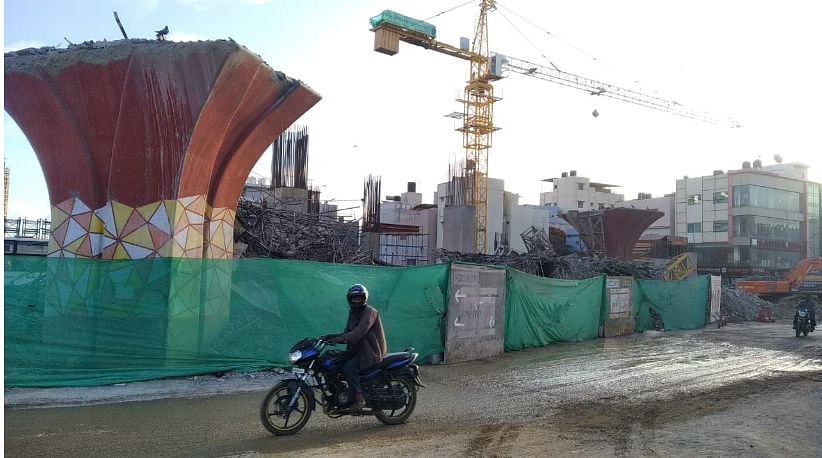
Over the past five months, the Jayadeva flyover has disappeared in bits from the city’s list of major landmarks.
The Bangalore Metro Rail Corporation Limited (BMRCL) that dismantled the flyover hopes to raise the pillars of the double-decker flyover that will have a road carriageway along with the RV Road-Bommasandra metro line (Reach 5) of Phase 2.
The demolition happened in phases, with the loop ramp linking the Bannerghatta Main Road first going on January 20.
Completing the work in 75 days, officials banned night traffic and have set up the support decks for the bottom of the main flyover.
They first removed the crash barriers and ripped the main flyover in little pieces in 102 days. The heavy-duty waterjet machine combined with the lockdown had significantly reduced the dust along the stretch.
In the next few days, officials will remove the flyover’s last vestiges — the remaining pillars and the pile of iron bars that would complete the razing of the marquee structure.
BMRCL managing director Ajay Seth said the debris from the site has been taken for reusable work at Chikkajala.
“Almost 572 trucks of soil, debris has been disposed of from demolition. To avoid huge noise to the public during the night-time demolition, we have used noiseless equipment with the water jet to avoid dust pollution,” he added.
Built in two years at a cost of Rs 20.8 crore and opened to the public in February 2005, the flyover and grade separator were a solution to the congestion on the Marenahalli Road.
BMRCL decided to replace it with a new flyover to decongest the Silk Board junction, known for its traffic jams.
The 2.9 km-long double-decker flyover will have four-lane roads connecting Jayadeva junction to Silk Board with loops stretching out to Outer Ring Road (ORR), HSR Layout, and Madiwala.
It also includes the metro station of Reach 5 with the original plan, including the integration of another metro station from the KR Puram-Silk Board Metro line.